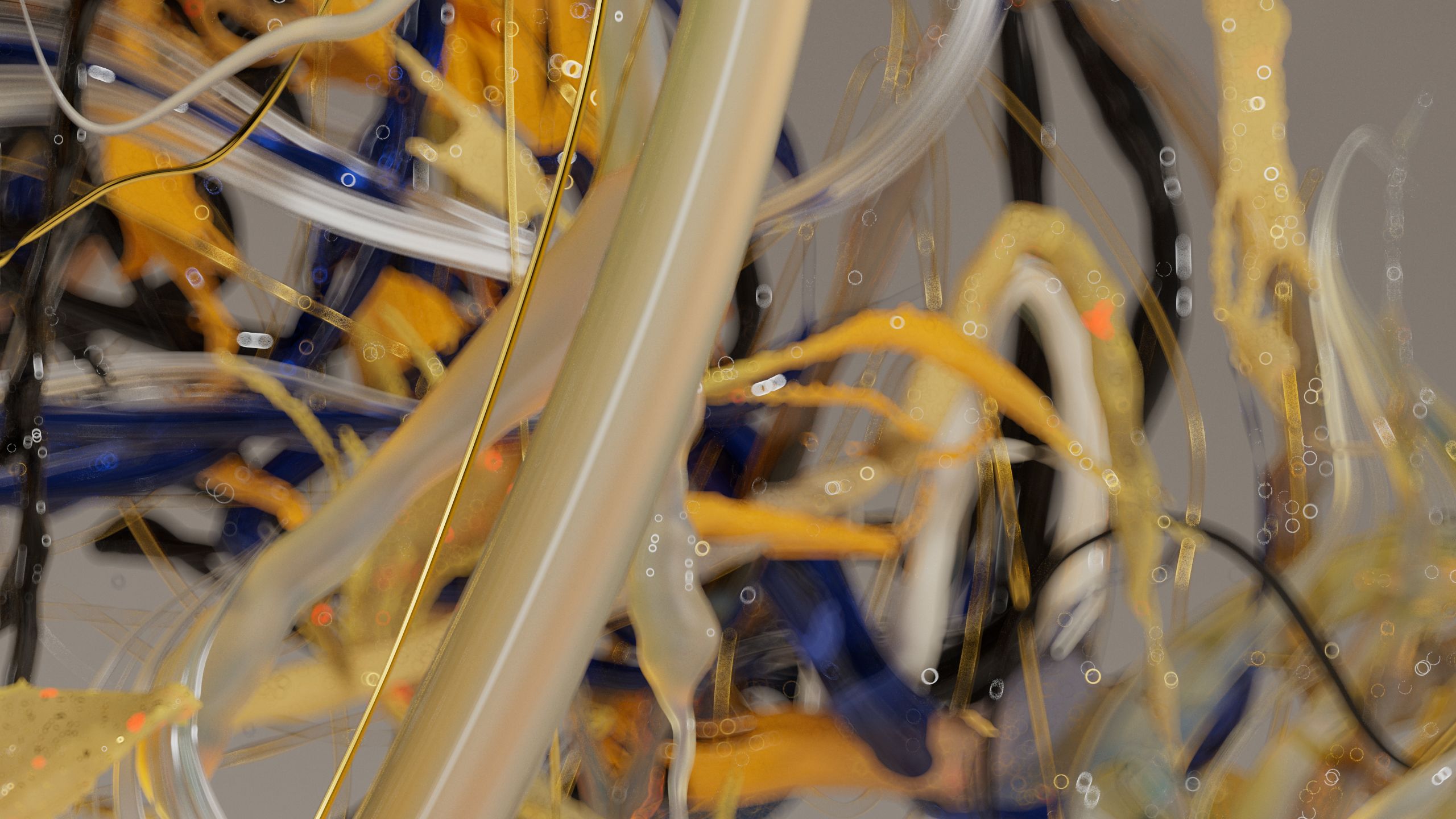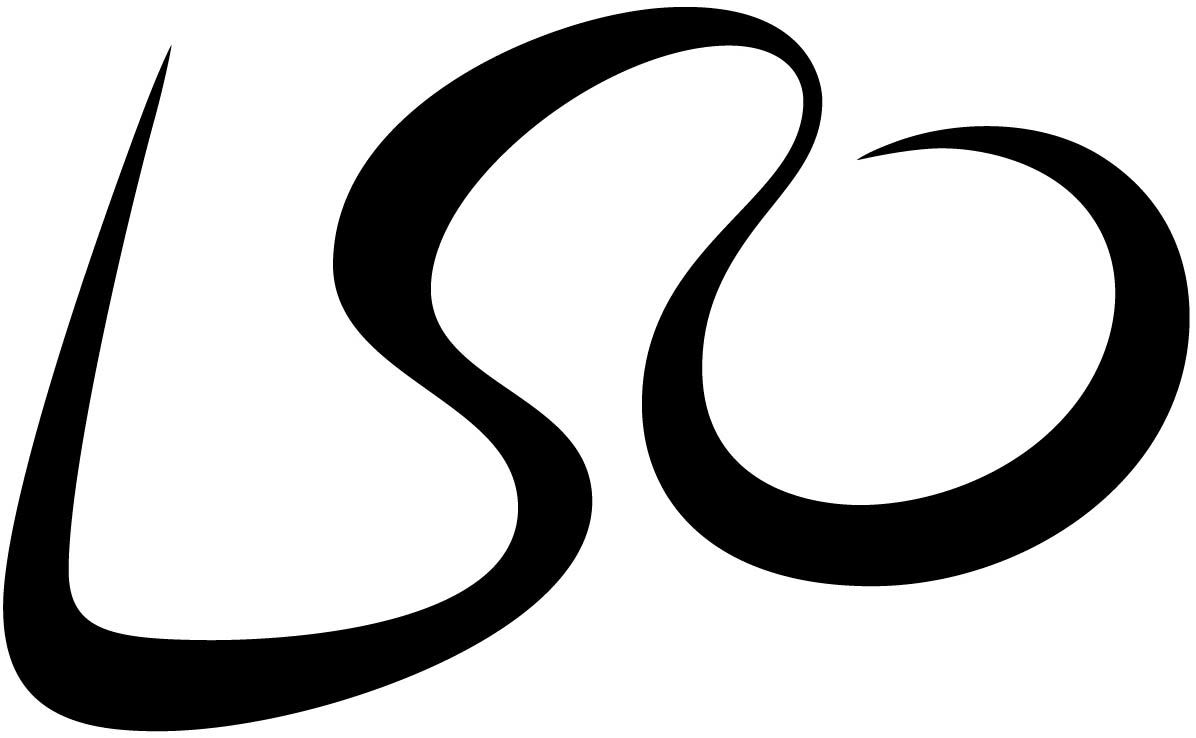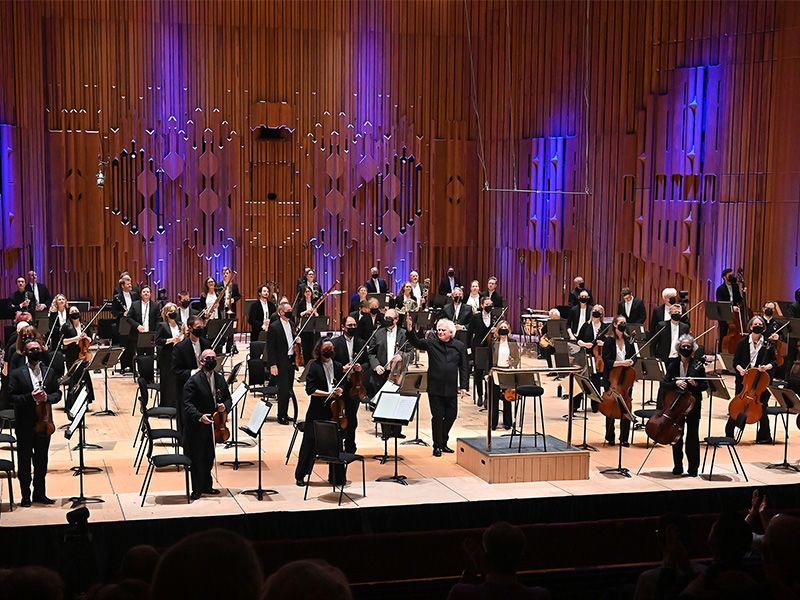LSO Half Six Fix
John Adams' Harmonielehre
Digital Concert Guide

THE CONCERT
Wednesday 19 April 6.30pm
John Adams Harmonielehre
Jonathan Stockhammer conductor & presenter
London Symphony Orchestra
USING YOUR DIGITAL CONCERT GUIDE
- Navigate using the menu icon (≡) at the top of the screen.
If you're using this guide while enjoying the concert:
- Connect to the Barbican Free WiFi network in the Concert Hall.
- Please set your phone to silent and don't use other apps during the music.
Welcome to tonight's Half Six Fix, a different way to experience the London Symphony Orchestra.
In tonight's concert, LSO Music Director Sir Simon Rattle journeys to 1980s California, and introduces you to the vast, visionary expanses of John Adams’ Harmonielehre.
John Adams
Harmonienlehre
✒️ 1984–85 | ⏰ 40 minutes
Part 1 –
Part 2: The Anfortas Wound
Part 3: Meister Eckhart and Quackie

Two pillars underpin the music of American composer John Adams. One is an association with Minimalism, the movement that began in the visual arts in 1960s New York and spread to music under pioneering figures such as La Monte Young, Terry Riley, Steve Reich and Philip Glass. Adams, though, soon rejected the literal, machine-like structures of Minimalism and began to soften its pattern-repetitions and phase-shifting, adding a more expressive, even sensual, element and a wider range of moods and colours.
The other pillar of Adams’ output is his appetite for a wide range of music and ideas, regardless of style or period. Adams has written of how composers should allow themselves to pluck ideas from their surroundings. ‘It may be the rhythms of a group of people chattering in a restaurant,’ he says, ‘or the Doppler effect of a passing train, or three notes from someone else’s song, be it Mahler’s or Otis Redding’s.’ Adams is just as happy drawing on marching bands and cartoon music as he is the poetry of Walt Whitman or Emily Dickinson.
Game On
Music from Harmonielehre and other works by Adams – including Grand Pianola Music, Shaker Loops, Nixon in China and the Violin Concerto – was used for the ‘modern age’ era of the soundtrack to the 2015 video game Civilization IV.
Harmonielehre was the piece that lifted John Adams out of an 18-month creative block in the early 1980s. The title (meaning ‘Theory of Harmony’) is taken from the textbook first published in 1911 by Arnold Schoenberg, who was on the brink of obliterating conventional Western harmony to create an uncompromisingly abstract sound-world.
Adams was himself considering the future of conventional harmony but, unlike Schoenberg, he believed that it had one. In Harmonielehre he secures an unlikely marriage between the rich harmony of the late-Romantics – Wagner, Mahler, Sibelius – and the rhythmical structures of Minimalism.
Adams on Schoenberg
‘His music is tough and an acquired taste. It’s not pretty and I don’t find it attractive in the way that I find Wagner or Messiaen attractive. But that doesn’t mean that I’m not attracted to it.’

The large first movement falls into three sections. It plunges in with brutal repetitions of a single chord, which generate a layering of pulses and pivoting harmonies. The energy of this section was inspired by a dream Adams had in which, while crossing the San Francisco Bay Bridge, he imagined an oil tanker rising, rocket-like, out of the water below. Like the Adams of Short Ride in a Fast Machine (1986), the music both glistens with its detail and shocks with its immediacy. Around six and a half minutes in, the middle section opens with a long, slow but restlessly yearning melody, beginning on cellos and horns. Gradually the fast pulsing of the first section returns, to end the movement with surging, monumental energy.
Adams on Cage
In his book Hallelujah Junction, Adams recalls a performance in Leningrad (now St Petersburg) in 1988 of Harmonielehre that was also attended by fellow American composer John Cage (famed for his exploration of silence in his provocative 4’33”). Adams secretly hoped that Cage might have left town before the Harmonielehre performance. ‘We’d become good friends,’ says Adams, ‘and I knew that my explosive, pounding triads and throbbing climaxes would most certainly discomfit him.’

The title of the second movement refers to Anfortas, Lord of the Holy Grail in Arthurian legend, who suffers an unhealable wound (something Adams might have identified with during his extended creative impasse). The harmonic sound-world is open and elliptical, free-ranging and other-worldly. The angst-ridden climax recalls the point of crisis in the first movement of Mahler’s Tenth Symphony, written soon after Mahler discovered his wife Alma was having an affair.
The ethereal atmosphere at the opening of ‘Meister Eckhart and Quackie’, the third movement, was inspired by another dream, in which Adams saw his then four-month-old daughter – nicknamed ‘Quackie’ because of the duck-like noises she made – being carried over the shoulder of the German medieval mystic Eckhart von Hochheim, also known as Meister Eckhart. The movement contrasts the major (bright) and minor (dark) scales of E-flat, with the end triumphing – like Beethoven’s ‘Eroica’ Symphony – in the blazing major. As Adams has said, perhaps with a twinkle in his eye: ‘I simply placed the keys together, as if in a mixer, and let them battle it out.’
Not to be confused with …
There are at least two composers named John Adams: apart from the Welsh singer-songwriter of the same name, there’s also John Luther Adams – like Harmonielehre’s Adams, an American and a Pulitzer Prize-winner whose works are often inspired by nature and the environment, examples being Become Ocean (2013) and Become Desert (2017).
John Adams (born 1947, US)
Composer

John Adams is one of most performed of today’s composers, raised in New England on America’s East Coast before moving to California on the West Coast in his twenties. As a Harvard undergraduate in the 1960s, he embraced the directness of jazz and rock. On moving to California, where he taught and organised new-music concerts at the San Francisco Conservatory, he dabbled in electronic music, but in the late 1970s produced his first important Minimalist works – Phrygian Gates and the string septet Shaker Loops (later revised for string orchestra). An association with the San Francisco Symphony (1978–85) led to large-scale orchestral works, including Harmonium (1980–81), with choir; Grand Pianola Music (1982) featuring two piano soloists; and Harmonielehre (1984–85). Many of his nine stage-works – including Nixon in China (1985–87), The Death of Klinghoffer (1989–91) and Doctor Atomic (2004–05) – take their scenarios from American current affairs or history, leading to the term ‘docu-opera’; the most recent, Girls of the Golden West, set during the California Gold Rush, was premiered in 2017. His concertos for violin and for piano have attracted soloists of the calibre of Leila Josefowicz and Yuja Wang.

Rattle on Adams
‘There’s not much music that comes to mind when flying on small planes … The way John’s music goes is exactly like that. It’s as though you’re taking off, but you’re close enough to the ground to see the excitement of what’s going on below.’

The Performers

Jonathan Stockhammer
conductor
In just a few years, Jonathan Stockhammer has made a name for himself in the worlds of opera, symphonic repertoire and contemporary music. As a superb communicator, he has a great talent not only for presenting concerts but also for working on an equal footing with a variety of performers – whether they are young musicians and rappers or stars such as Imogen Heap or the Pet Shop Boys.
Opera is central to his work. The operas he has conducted – including Zemlinsky‘s Eine florentinische Tragödie, Sciarrino‘s Luci mie traditrici and Monkey: Journey to the West by Damon Albarn – identify him as a conductor who welcomes and masters the difficulties presented by complex scores and special, interdisciplinary productions.
Aside from conducting classical and romantic masterpieces and contemporary classical works, he enjoys delving into music that blurs the boundaries between classical music, rock, pop and hip-hop.
Jonathan first studied Chinese and political science before moving on to studies in composition and conducting in his hometown of Los Angeles. During his studies, he filled in for a series of concerts with the Los Angeles Philharmonic, after which he was asked to become chief conductor Esa-Pekka Salonen’s assistant. After completing his studies, he moved to Germany where he formed close relationships with well-known European ensembles such as Ensemble Modern, Collegium Novum Zürich and Ensemble Resonanz.
London Symphony Orchestra
At the London Symphony Orchestra we strive to inspire hearts and minds through world-leading music-making. We were established in 1904, as one of the first orchestras shaped by its musicians.
Through inspiring music, a world-leading learning and community programme and technological innovations, our reach extends far beyond the concert hall.
On Stage
Leader
José Blumenschein
First Violins
José Blumenschein
Clare Duckworth
Ginette Decuyper
Maxine Kwok
William Melvin
Laurent Quénelle
Harriet Rayfield
Sylvain Vasseur
Rhys Watkins
Momo Wong
Julian Azkoul
Morane Cohen-Lamberger
Grace Lee
Dániel Mészöly
Patrick Savage
Second Violins
David Alberman
Thomas Norris
Sarah Quinn
Miya Väisänen
David Ballesteros
Matthew Gardner
Naoko Keatley
Alix Lagasse
Belinda McFarlane
Iwona Muszynska
Csilla Pogany
Sabrina Bradford
Chelsea Sharpe
Violas
Jane Atkins
Gillianne Haddow
Malcolm Johnston
Germán Clavijo
Steve Doman
Robert Turner
Cynthia Blanchon
Luca Casciato
Errika Collins
Cynthia Perrin
Alistair Scahill
Cellos
Rebecca Gilliver
Anna Garde
Alastair Blayden
Daniel Gardner
Laure Le Dantec
Ken Ichinose
Desmond Neysmith
Peteris Sokolovskis
François Thirault
Double Basses
David Stark
Patrick Laurence
Matthew Gibson
David Johnson
Jani Pensola
Chaemun Im
Kai Kim
Simon Oliver
Flutes
Gareth Davies
Amy Yule
Sarah Bennett
Piccolos
Sharon Williams
Patricia Moynihan
Oboes
Juliana Koch
Olivier Stankiewicz
Henrietta Cooke
Cor Anglais
Maxwell Spiers
Clarinets
Chris Richards
Ben Mellefont
Chi-Yu Mo
Andrew Harper
Bass Clarinets
Kenny Keppel
Andrew Harper
Bassoons
Daniel Jemison
Todd Gibson - Cornish
Joost Bosdijk
Contra Bassoon
Rebecca Koopmans
Horns
Timothy Jones
Nick Mooney
Angela Barnes
Olivia Gandee
Jonathan Maloney
Trumpets
James Fountain
Gareth Small
Adam Wright
Niall Keatley
David Geoghegan
Trombones
Peter Moore
Simon Johnson
Jonathan Hollick
Bass Trombone
Paul Milner
Tubas
Ben Thomson
Carl Woodcroft
Timpani
Nigel Thomas
Patrick King
Percussion
Neil Percy
David Jackson
Patrick King
Tom Edwards
Jeremy Cornes
Harps
Bryn Lewis
Manon Morris
Piano
Joseph Havlat
Celeste
Zeynep Özsuca
Explore music by the London Symphony Orchestra like never before with the new Apple Music Classical app, included with your Apple Music subscription.
For playlists and more visit lso.co.uk/fix.





